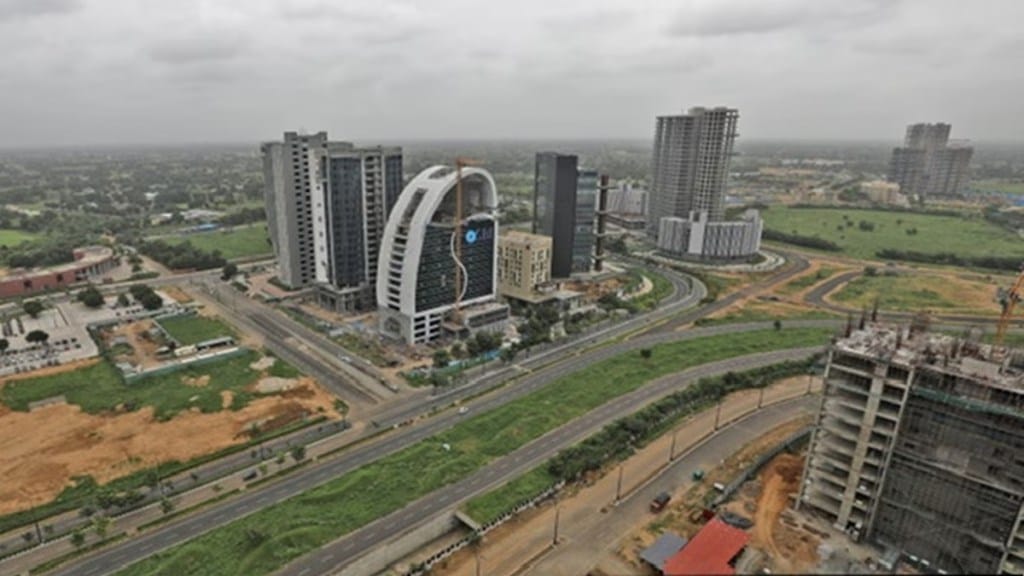– By Pranay Kumar
The past decade has witnessed a transformative phase in India’s infrastructure landscape, laying the foundation for a future where economic growth is intricately linked with the scope and vigor of infrastructural build-out. As the nation looks ahead to the next decade, infrastructure development is poised to play a pivotal role in steering India towards sustainable and equitable growth during the Amrit Kaal. Infrastructure spending holds a powerful multiplier effect in terms of channeling its impact through various avenues. It not only generates employment but also enhances the competitiveness of the manufacturing and services sectors, attracts FDI, and raises the standard of living for the people of the country.
In the preceding years, the government has launched key initiatives such as the National Infrastructure Pipeline (NIP), National Monetization Pipeline (NMP), PM Gati Shakti Plan, and the National Logistics Policy. These cover the entire value chain of infrastructure planning, resource generation, and infrastructure creation on an unprecedented scale. Almost every year over the last one decade, the focus of the Union Budget has been primarily on increased infrastructure spending. The facilitating environment directly includes growth in most of the industry segments.
The evolving geopolitical scenario presents a unique opportunity for India to integrate herself in the global supply chain to take-up a crucial role on the global stage. This highlights the urgency for the nation to expedite infrastructure development to ensure that it aligns with global demands and positions India as a key player. Beyond economic benefits, infrastructure development addresses social goals by generating employment on a large scale and providing access to essential services and amenities for all citizens. The exponential economic growth anticipated in the country necessitates a corresponding investment in infrastructure to support and sustain this trajectory.
Among the themes that will anchor the course of growth by achieving infrastructure of both unrivaled quantity and quality for the next 25 years are high-speed connectivity, transit safety, environmentally friendly mobility, and social infrastructure, which includes a variety of public and community services aimed at fostering social connections and enhancing societal well-being. Focusing on these areas will ensure that Indian infrastructure is propelled to a truly global standard during the Amrit Kaal. In fact, in the pursuit of optimizing India’s logistics efficiency, PM Gati Shakti National Master Plan is already working to establish accessibility to all districts and their pivotal industrial and commercial hubs.
The focus on safer infrastructure aligns with Sustainable Development Goals 2030, emphasizing the design and construction of structures that minimize hazards and improve safety for users. Initiatives like KAVACH (Automatic Train Protection System) by Indian Railways and the Advanced Traffic Management System by MoRTH aim to achieve the vision of zero accidents are already working in this direction of emphasizing the importance of safety in infrastructure development. Convenience is another vital aspect that plays a role in realizing the full potential of infrastructure. Ministries must adopt technology to expedite clearance processes for efficient freight movement. Streamlining processes at Multi-Modal Logistics Parks (MMLPs), ports and airports will significantly improve freight movement.
Social infrastructure is especially important when it comes to meeting the pressing need for improved living circumstances for those who lack access to basic utilities like power, drinkable water, and sanitary facilities. Social infrastructure ensures that the benefits of progress are distributed fairly and widely available to all by acting as a connecting link across communities. People’s perception of what infrastructure is and is not has changed substantially, indicating a shift towards a more holistic viewpoint that acknowledges the combined ability of social and physical structures to support and uplift communities.
As India strides towards the Amrit Kaal, developing a multi-year National Transport Strategy that encompasses policy measures and investments is extremely important. This would include building new infrastructure, modernizing existing facilities, investing in new technologies, improving the regulatory environment, promoting alternative modes of transportation and broadening the scope of infrastructure beyond the physical realm to include social infrastructure. In the next 25 years, India’s infrastructure will need not merely to be the backbone of economic growth but the catalyst for a prosperous and harmonious society so that the nation ascends to new heights of progress and global prominence.
(Pranay Kumar is the Executive Director at REPL (Rudrabhishek Enterprises Limited)).
(Disclaimer: Views expressed are personal and do not reflect the official position or policy of Financial Express Online. Reproducing this content without permission is prohibited.)

